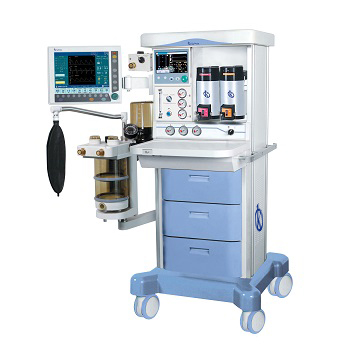Anesthesia is a vital medical resource for various surgical and dental procedures. Anesthesia is a branch of medicine treatment that provides temporary pain relief by blocking the sensory and motor senses. A variety of drugs, collectively known as anesthetics, are used to provide the anesthetic.
These drugs are supplied with a variety of methods, from inhalant to penetrant. In some cases, surgical procedures require the use of the anesthesia machine that controls the levels of anesthesia, in an automated, accurate and predictable way, which allows reducing human errors. Today, these machines are used in most operating theaters around the world.
What are the risks of using anesthesia machines?
Despite the benefits of anesthesia, there are some risks associated with using the anesthesia machine. These risks include the possibility of an overdose of anesthetic, which could lead to cardiac arrest, breathing difficulties, severe allergic reactions and potential long-term health problems. To minimize the risk of these complications, it is important that patients undergo thorough medical evaluations before and during use of the anesthetic machine.
An important risk of machine anesthesia is the possibility of allergic reactions. Some people are, or develop, a sensitivity to the anesthetic. This reaction may result in breathing difficulties, nausea, cold sweats, dizziness, vomiting, rapid heart rate, angina and sudden low blood pressure. Fortunately, these allergic reactions are usually successfully managed with injections of epinephrine, corticosteroids, and other drugs given to patients.
What are the consequences of an anesthetic overdose?
Once the anesthetic is administered, there are some potential risks of the anesthetic machine. These include the likelihood of an anesthetic overdose. This can lead to breathing difficulties, cardiac arrhythmias and cardiac arrest, and is undesirable as it puts the patient on the brink of death.
Anesthetic overdose occurs when the amount of anesthetic a patient receives exceeds that recommended for a particular surgical procedure. If this happens, it can lead to severe breathing difficulties, heart arrhythmias, difficulties maintaining a normal body temperature, a heart attack and sudden death.
How can the risks of using the anesthesia machine be reduced?
Proper maintenance of the anesthetic machine during use is key to ensuring a safe procedure. This means making sure the machine is in good condition and proper operating procedures are carried out before surgery. This includes checking that supplies of anesthetics are fresh and unadulterated, checking equipment, machine, and checking oxygen levels in the operating room.
Life-threatening complications of anesthesia may be limited if complete medical evaluations are conducted before use of the anesthesia machine. This will allow doctors to determine whether the patient is in good health for general anesthesia. Patients should be advised of the risks of anesthesia and the administration of anesthetics prior to any surgical procedure.
In general, the use of the anesthesia machine has high safety levels. This is largely due to the thorough use of medical assessments prior to the surgical procedure to ensure patient safety. Appropriate care of the anesthetic machine should be followed, as well as use and surveillance to monitor patient safety during the procedure. If doctors take all these precautions, the risks of complications related to anesthesia and the anesthesia machine can be greatly minimized.
The use of Kalstein anesthesia machines
Kalstein, it is recommended to carefully study their operation, as well as the most common faults. Although these devices are characterized by their reliability, accurate control of the dose of anesthetic provided and compliance with EC regulations, the user must comply with the protocols of use for safe operation with minimal risks. Several models are available, as shown in the web portals HERE and HERE There is also information about purchases, sales and prices of these devices.

